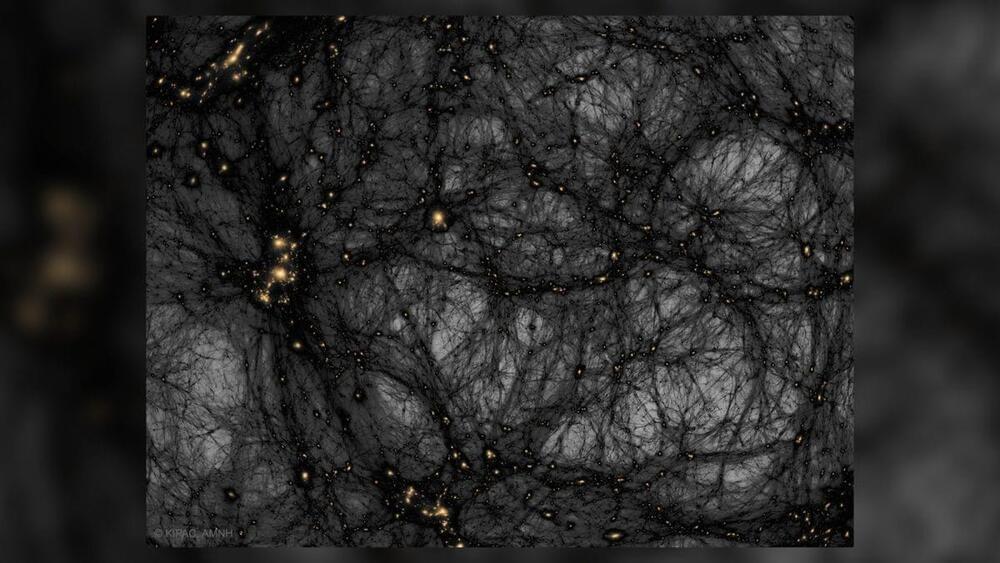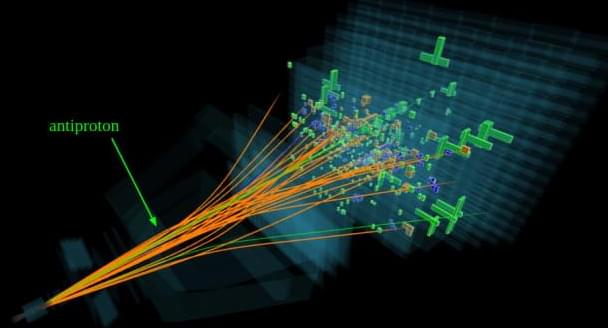Bizarre, Evolutionary Missing Link Uncovered in Hubble Deep Survey of Galaxies The universe is so saturated with galaxies that even the weirdest things can go unnoticed for years after Hubble Space Telescope “deep-exposure” observations are taken. In sort of an intergalactic Where’s Waldo, an international team of astronomers uncovered in Hubble archival data a mysterious red dot nearly in the middle of the Great Observatories Origins Deep Survey-North (GOODS-North). As innocuous as it looks, it could be a rare missing link between some of the very earliest galaxies and the birth of supermassive black holes. The object, referred to as GNz7q, existed when the universe was just a toddler, only 750 million years after the big bang. The mixture of radiation from the object cannot be attributed to star formation alone. The best explanation is that it is a growing black hole shrouded in dust. Given time, the black hole will emerge from its dusty cocoon as a brilliant quasar, an intense beacon of light at the heart of an early galaxy. The pioneering Hubble telescope has provided a unique target for NASA ’s James Webb Space Telescope to use its spectroscopic instruments to study objects like GNz7q in unprecedented detail.
Category: cosmology – Page 252
How we came to exist is best stated in the Barenaked Ladies’ lyric “It All Started with the Big Bang,” the moment that space-time began.
Inflatons, gravitons, and Dark Matter are the story that is emerging immediately following The Big Bang.
John Abbruzzese, On using the multiverse to avoid the paradoxes of time travel, Analysis, Volume 61, Issue 1, January 2001, Pages 36–38, https://doi.org/10.1093/analys/61.1.36.
But these particles would interact only weakly with ordinary matter, and only via the force of gravity. This description is eerily similar to what we know about dark matter, which does not interact with light yet has a gravitational influence felt everywhere in the universe. This gravitational influence, for instance, is what prevents galaxies from flying apart.
“The main advantage of massive gravitons as dark matter particles is that they only interact gravitationally, hence they can escape attempts to detect their presence,” Cacciapaglia said.
In contrast, other proposed dark matter candidates — such as weakly interacting massive particles, axions and neutrinos — might also be felt by their very subtle interactions with other forces and fields.
The image from the Hubble Space Telescope shared this week shows a “serpentine” galaxy with winding, snake-like spiral arms, and is appropriately enough located in the constellation of Serpens, or The Snake. Technically known as NGC 5,921, the galaxy is located 80 million light-years away.
The galaxy NGC 5,921 is a type called a barred spiral galaxy, like our Milky Way. The bar refers to the strip of bright light across the center of the galaxy, which is a region of dust and gas where many stars are born — hence why it glows brightly. Around half of known galaxies have bars, and researchers think that they develop as galaxies get older and dust and gas are drawn in toward their center by gravity.
The image was taken as part of a Hubble study into how the supermassive black holes at the hearts of galaxies relate to the stars within them. Hubble used its Wide Field Camera 3 instrument to take the image, which was combined with data from the ground-based Gemini Observatory.
If the W’s excess heft relative to the standard theoretical prediction can be independently confirmed, the finding would imply the existence of undiscovered particles or forces and would bring about the first major rewriting of the laws of quantum physics in half a century.
“This would be a complete change in how we see the world,” potentially even rivaling the 2012 discovery of the Higgs boson in significance, said Sven Heinemeyer, a physicist at the Institute for Theoretical Physics in Madrid who is not part of CDF. “The Higgs fit well into the previously known picture. This one would be a completely new area to be entered.”
The finding comes at a time when the physics community hungers for flaws in the Standard Model of particle physics, the long-reigning set of equations capturing all known particles and forces. The Standard Model is known to be incomplete, leaving various grand mysteries unsolved, such as the nature of dark matter. The CDF collaboration’s strong track record makes their new result a credible threat to the Standard Model.
We can build a real, traversable wormhole… if the universe has extra dimensions.
It may be possible to build a real, traversable wormhole, but only if our universe has extra dimensions, a team of physicists has found.
The W boson measurement provides insight into the weak nuclear force, and could explain other longstanding mysteries like antimatter imbalance and dark matter.
Physicists are using quantum math to understand what happens when black holes collide. In a surprise, they’ve shown that a single particle can describe a collision’s entire gravitational wave.
At the Quark Matter conference today and at the recent Rencontres de Moriond conference, the LHCb collaboration presented an analysis of particle collisions at the Large Hadron Collider (LHC) that may help determine whether or not any antimatter seen by experiments in space originates from the dark matter that holds galaxies such as the Milky Way together.
Space-based experiments such as the Alpha Magnetic Spectrometer (AMS), which was assembled at CERN and is installed on the International Space Station, have detected the fraction of antiprotons, the antimatter counterparts of protons, in high-energy particles called cosmic rays. These antiprotons could be created when dark-matter particles collide with each other, but they could also be formed in other instances, such as when protons collide with atomic nuclei in the interstellar medium, which is mainly made up of hydrogen and helium.
To find out whether or not any of these antiprotons originate from dark matter, physicists therefore have to estimate how often antiprotons are produced in collisions between protons and hydrogen as well as between protons and helium. While some measurements of the first have been made, and LHCb reported in 2017 the first-ever measurement of the second, that LHCb measurement involved only prompt antiproton production – that is, antiprotons produced right at the place where the collisions took place.









